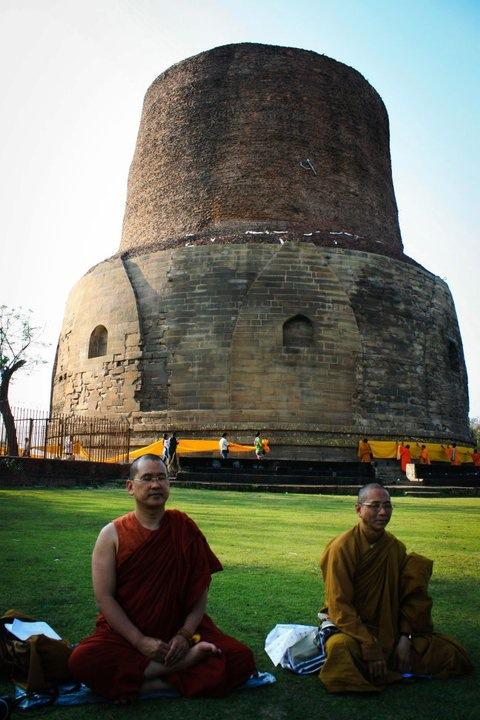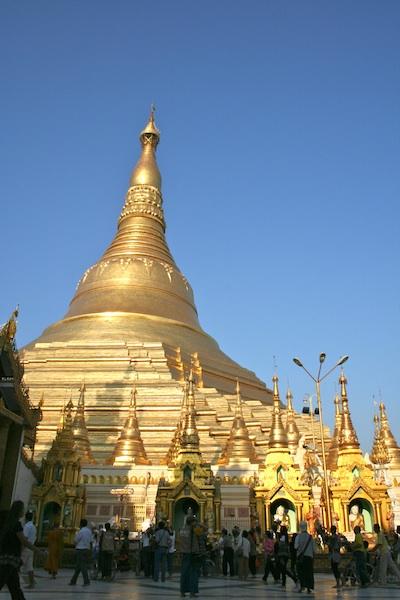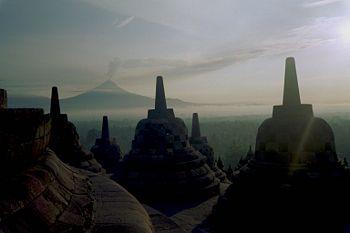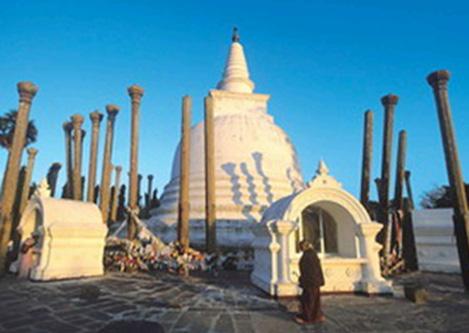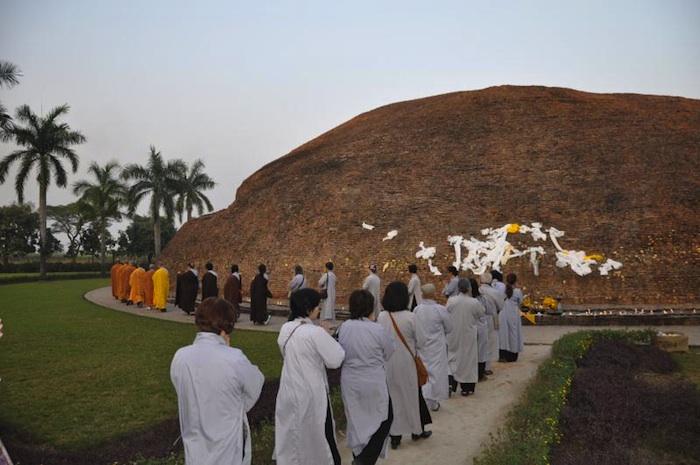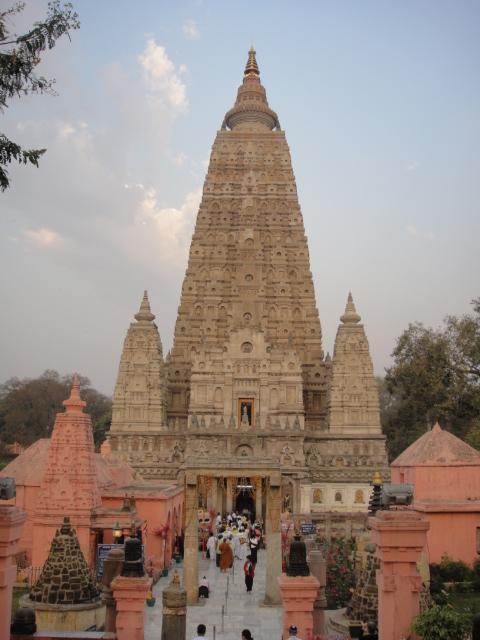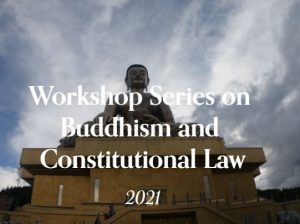St?pas began in ancient times as dome-shaped mounds of earth or brick constructed to mark the passing of a great monarch. St?pas found in the Buddhist tradition are of four types: those built over the remains of the Buddha or his disciples; those containing objects used by the Buddha; those marking an important event in the Buddha’s life, and those simply consecrated as shrines.
St?pas have taken the most simple and natural of shapes in the various cultures where Buddhism has spread. The shapes can take many forms such as a bell (a favorite with builders throughout the ages), a water pot, a bubble, a stack of paddy-straw, a lotus bud or a nelli fruit (phyllanthus emblica). These latter-day st?pas are refinements of the basic idea of a mound.
The fabric of ancient st?pas is often built on or over each time restoration is needed. This process of renewal is not about an ‘edifice complex’, the building of a more ornate or grander fabric over the previous one. On the contrary, it is evidence of an undying faith in the sacredness of the Buddha’s relics enshrined in many of those st?pas and the urgent need to preserve them. Paying for the cost of restoring or building a st?pa often means parting with one’s most precious worldly possessions, be it gold, jewelry or money; many have made such sacrifices to preserve the Buddha’s teaching. Unfortunately, in the last two centuries, some ancient st?pas have suffered at the hands of archeologists and explorers mistakenly believing that boundless treasures were buried in them.
Pitirim Sorokin, a sociologist, suggested in his detailed analysis of the arise and fall of civilizations as far back as 1937, that cultures can be traced to three value systems: the sensate, the ideational and the idealistic. The sensate value system holds that matter alone is real and that spiritual experience is only a manifestation of matter. The ideational value system holds that true reality goes beyond materialism or sensory perception and that true knowledge can only be gained from inner experience. The interplay of these two opposing value systems yields a third one, the idealistic. The idealistic value system admits the sensory and supersensory aspects of reality as one.
According to Sorokin, idealistic cultural periods tend to produce high points of expression in aesthetics, art, philosophy, science and technology. St?pas such as the Mah?bodhi in Bodhgaya (India), the Th?p?rama in Anuradhapura (Sri Lanka), the Shwedagon Pagoda in Yangon (Myanmar) and Borobudur in Mendut (Indonesia) are testimonies to such cultural periods. The Shwedagon, for example, inspired Rudyard Kipling to pen these words ‘a golden mystery… a beautiful winking wonder.’
More than their physical structure, it is what they represent that makes st?pas immensely significant to Buddhists around the world. St?pas symbolize the theory, the practice and the realization of the path leading to Enlightenment, the complete understanding of the true nature of this life the Buddha taught through the Four Noble Truths. They are calls to the Right Understanding about the human condition, which is unsatisfactory, impermanent and devoid of a self.
One poignant example is the ‘mound’ in Kushinagar where the Buddha was cremated, which is nothing more than a huge, stark, contoured brickwork true to the word. The sight of such a simple monument to the passing away of such a great being easily moves one to tears. When one enters the candlelit shrine to pay homage to the Buddha image ‘lying in state’ on a cold bleak winter morning, the feeling of sadness is overpowering. Kushinagar is to this day a nondescript town. Even ?nanda asked the Buddha why he had chosen such a place to enter Mah?parinibb?na (full Nibb?na). Despite its lackluster appearance, Kushinagar is an unforgettable place to reflect on death and the passing of the Buddha.
In the Tibetan tradition, st?pas (referred to as chortens) are built to celebrate the life events of the Buddha. Those events include his Birth in Lumbini, Enlightenment in Bodhgaya, Turning the Dharma Wheel in Sarnath, Miracles in Shravasti, Descending from Tusita heaven in Sankashya, Reconciliation of the Sangha in Rajgir, Victory in Vaishali and Parinibbana in Kushinagar. These chortens serve to remind us of the Buddha’s fulfillment of his original aspiration to attain Enlightenment and the establishment of his dispensation showing others how to do the same.
Indeed, st?pas are powerful images that help us to connect to the Buddha’s attainment of the highest human potential. The enshrinement of relics of the Buddha and his disciples adds special meaning to our reverence for st?pas.
According to ancient texts, the eight Buddha hair relics enshrined in the Shwedagon in Myanmar can be traced back to two caravan traders, Tapussa and Bhallika, who hailed from Balkh, north of Afghanistan. Myanmar was then a part of ancient India served by the Great Northern Highway. This highway ran through ancient Iran via Balkh in Bactria, connecting Middle India. These two merchants were the Buddha’s first lay followers, meeting him in Bodhgaya seven weeks after his enlightenment. They were given the hair relics as a token of remembrance for offering the Buddha rice cakes and honey. The exact spot where the merchants met up with the Buddha in Bodhgaya (the present grounds of the Mah?bodhi temple) is still known to this day. To stand in front of the Shwedagon and recall this meeting between the Buddha and the two merchants in Bodhgaya, gives a deep sense of joy and connection with the Buddha.
Legend and folklore are also an integral part of the history of many ancient st?pas. Tradition has it that when the Buddha’s hair relics were first enshrined in the Shwedagon, the earth shook and the relics emitted light that reached the heavens.
The Th?p?rama in Anuradhapura was built around 244 BC. It is said to contain the right collarbone of the Buddha and the plate from which he was accustomed to eat. As our group circumambulated the st?pa it started to drizzle. Very soon it became a downpour. When we had finished circumambulating we huddled together under a tin roof to chant. As soon as we had finished chanting and sharing merits with the devas (heavenly beings), the pelting rain stopped suddenly and completely. The deafening silence and calm that followed was most strange. Was it just a coincidence?
It has been said that symbols can make people feel in harmony with themselves, their community and the cosmos. As symbols, st?pas are constant reminders of the potential of all beings to liberate themselves from life’s great conundrum of birth and death. They provide a sense of connection with all sentient beings, bringing these stanzas of the Mett? Sutta to mind:
‘Whatsoever living beings there are;
Feeble or strong,
Long, stout or medium,
Short, small or large, seen or unseen.
Those dwelling far or near,
Those who are born and those
Who are to be born.
May all beings, without exception
Be happy minded.’
St?pas encapsulate that wish that all beings may walk the noble path shown by the Buddha to find the true happiness that is Nibb?na. As the Buddha declared, ‘As long as my disciples lead a pure religious life, so long will the world never become empty of Arahats (Enlightened being).’


